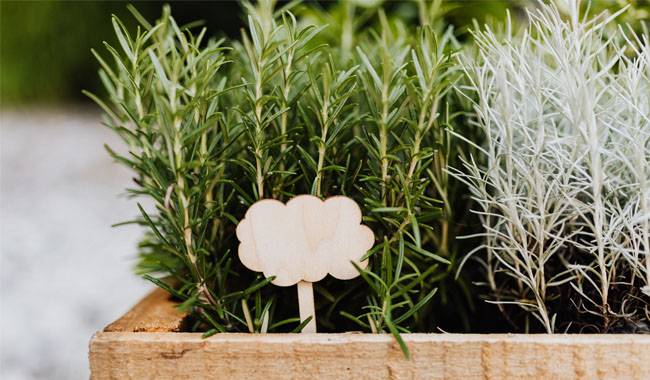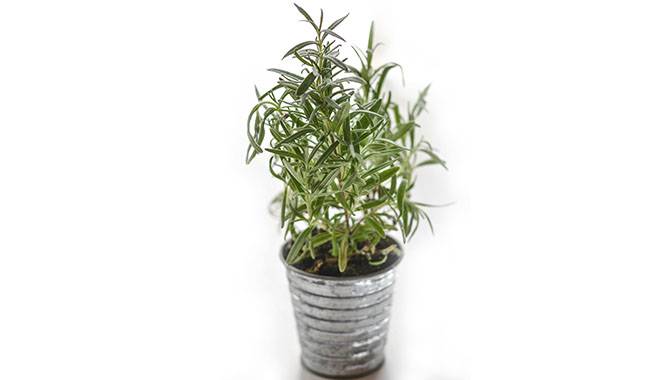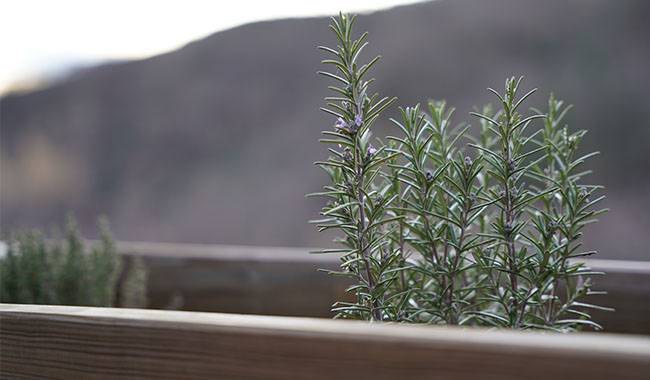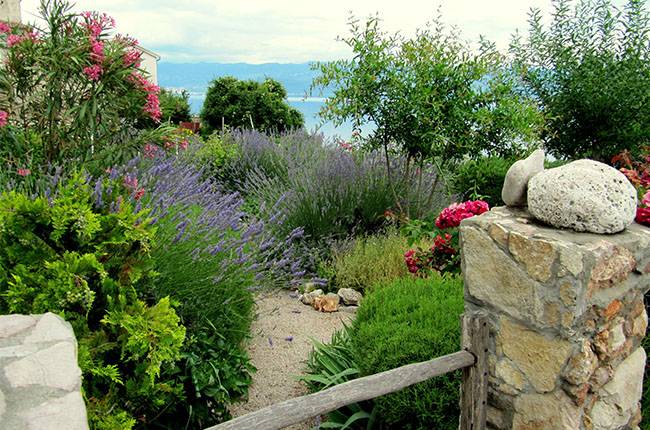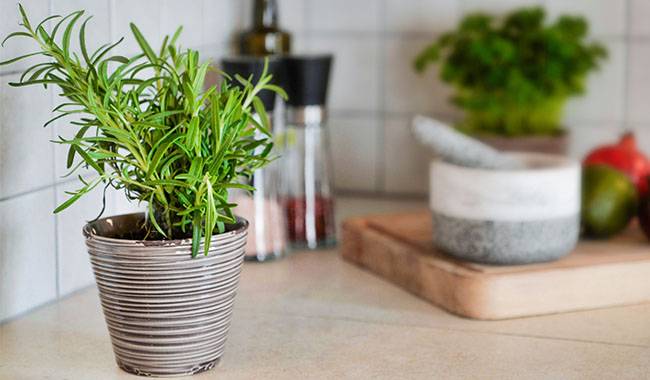
How to plant rosemary in a pot and get the most out of it? This article gives you detailed answers.
Rosemary is known to many housewives, but not everyone has tried to cook with it.
And this is a big omission. The name of this spicy herb from Latin translates to “seafood”. That’s what gives the dish its freshness and characteristic flavor. You don’t have to spend a lot of money to buy rosemary, you can grow it at home.
By learning to grow and care for it properly, you can grow a beautiful spice on your windowsill at home, making it not only a healthy herb but also a beautiful ornamental plant.
RULES FOR GROWING ROSEMARY
Rosemary is easy to grow in two ways: from seeds and cuttings. Seeds are traditionally the more complicated method. This is also due to the fact that the germination rate of rosemary seeds is very low. However, if you follow the instructions closely, it is possible.
Take a piece of gauze and soak it abundantly. Place the rosemary seeds on the moist gauze and leave it for 2 days.
After that, place the seeds on moist soil and tie a container of food film to it to retain heat and moisture. To oxygenate the inside of the foil, a few small holes can be made with a toothpick.
Once seedlings start to emerge, they should be sprinkled regularly with water from a sprayer.
Within 2-4 weeks, the seedlings should reach 7-9cm (2.75-3.54inch) in height and form at least 3 leaves. Then the seedlings can be transplanted into permanent soil. It is very important not to damage the shoots of rosemary.
Attention! Seed germination of this culture is recommended in early spring or autumn.
The second way to grow rosemary is from cuttings of adult plants. To do this, you need to cut a woody shoot from the top of the bush.
Remove the lower leaves from the cuttings and place the cuttings in a moist mixture of peat and sand (1:1). If such a mixture is difficult to obtain, a container with water can be used instead. Once the cuttings have roots, they will be transplanted into permanent soil.
Care and cultivation of potted plants on the windowsill
Growing rosemary, like any other plant, is the main thing – the soil. In this case, you need the most fertile soil, rich in humus.
Experienced flower growers recommend the following mixture: leaf soil, turf soil, humus, peat, sand (2:2:1:1:1).
Attention! Acidic soil – damaging to rosemary. But it is not only the soil that is important, there are other aspects of care.
Pots
Rosemary needs a lot of space, so the pot should also be spacious. It is best to take a pot made of clay. Be sure to provide drainage with the help of expanded clay or pebbles.
Temperature and humidity
Rosemary does not need a high temperature, but it likes sunlight, so place it in a south-facing window.
The plant should be allowed to “hibernate” in winter, keeping the temperature at 10-13°C (50-55.4°F). Otherwise, rosemary will not bloom. As for humidity, it is not very important. However, it is better to add humidity to the plant.
Watering
Drought and too much humidity can harm the flowers. Therefore, water rosemary often, but in moderation. More importantly, what kind of water to use for watering. It should not be difficult. In winter, water the water a little warmer.
Transplanting
Replant rosemary every 2 years in early spring. If the root system is too dense, you can do it every year.
Nutrition
Feed this plant during the period when the vegetation is active – March to September. It should be fertilized twice a month (both organic and mineral fertilizers).
Pruning
Cut back rosemary in June to form a crown. Use cuttings for planting or as a medicinal herb. If the stems of rosemary become bare in February or early March, prune specifically to remove the shoots growing close to the ground.
Rosemary pests and diseases. Rosemary is a natural insecticide, so it will not be damaged by pests. Diseases that appear with sudden changes in temperature – powdery mildew.
To prevent this from happening – you should not leave rosemary outside until November. As soon as the night temperature drops to 8-10°C (46.4-50°F) – move it to the balcony or a cold greenhouse.
Fertilization
Rosemary should be fed mineral and organic fertilizers twice a month from March to September when the plant reaches its active stage. Rosemary also likes calcium. If it is to be planted outdoors in spring, fertilization is not necessary if the soil is fertile.
Grafting
Rosemary can be grown by cuttings, seeds, cuttings, and divisions. Growing seeds is not difficult.
They can be bought in flower stores. Sow shallowly in loose, non-acidic soil. Seeds do not germinate immediately and seedlings may appear after 3-4 weeks.
Best sown in clear plastic food containers with lids. Water daily by spraying and drying. After a month young plants can be transplanted in separate pots.
It is easier to grow from cuttings, there is a lot of pruning and good rooting. However, for this method of planting, you need at least one mature plant. Plant cuttings 8-10cm (3.14-3.93inch) under a slope with loose soil. Water regularly.
Tip
To get the full benefit of rosemary’s sunlight, bring it outdoors in the summer. Expose the plant to open sunlight during the day and hide it indoors at night.
PEST CONTROL

Rosemary is quite resistant to pests and diseases. However, trouble can happen to it. Such as spider mites.
The main sign of its presence in the thin spider webs that are barely visible on the leaves and stems of the plant.
If the mite first appears, treat it with soapy water, which thoroughly washes the leaves of rosemary. If the infestation is neglected, you can not do without insecticides.
Improper watering can cause the lower leaves of rosemary to turn yellow. This could be a sign that it is not getting enough water. If, on the other hand, the leaves of rosemary fall off, this is a sign of overwatering. If small rust spots appear on the leaves, they can be removed by spraying with copper.
USES AND BENEFITS
Rosemary is grown not only for beauty. It is used in cooking and in folk medicine.
Medicine
The leaves of this plant contain essential oils, resins, and camphor. Therefore, rosemary is used to relieve spasmodic pain, as well as to eliminate inflammation.
It can also be used as an expectorant diuretic. Rosemary helps with gastrointestinal, liver, and gallbladder, diabetes, neurasthenia, insomnia, and other disorders.
Cooking
This spice has a special pine flavor with a sweet and spicy taste. It is seasoned in vegetable dishes such as eggplant, cabbage, mushrooms, and beans.
This spice adds a delicate flavor to soups, meats, and even fruits. Drinks containing this spice keep people alert. Rosemary is added to desserts, syrups, and liqueurs to obtain a specific refreshing aroma.
Rosemary can decorate homes, purify the air due to its plant-killing properties, and serve as a spice in the kitchen. Therefore, every home should have such a plant standing in the window.
How to care for rosemary
Rosemary is a hardy herb that does not require special care. Like lavender, it is a drought-tolerant plant. However, it is not frosted tolerant.
In northern areas where winters are frosty, it is best to grow rosemary in pots in winter and place it on a balcony or in the garden in summer.
If possible, plant it outdoors where it will soon develop a green mass and look healthier.
Prune the shrub vigorously in autumn and transplant it in pots with soil clumps. Water – at a minimum, keep it in a cool room at 10°C (50°F) throughout the winter.




